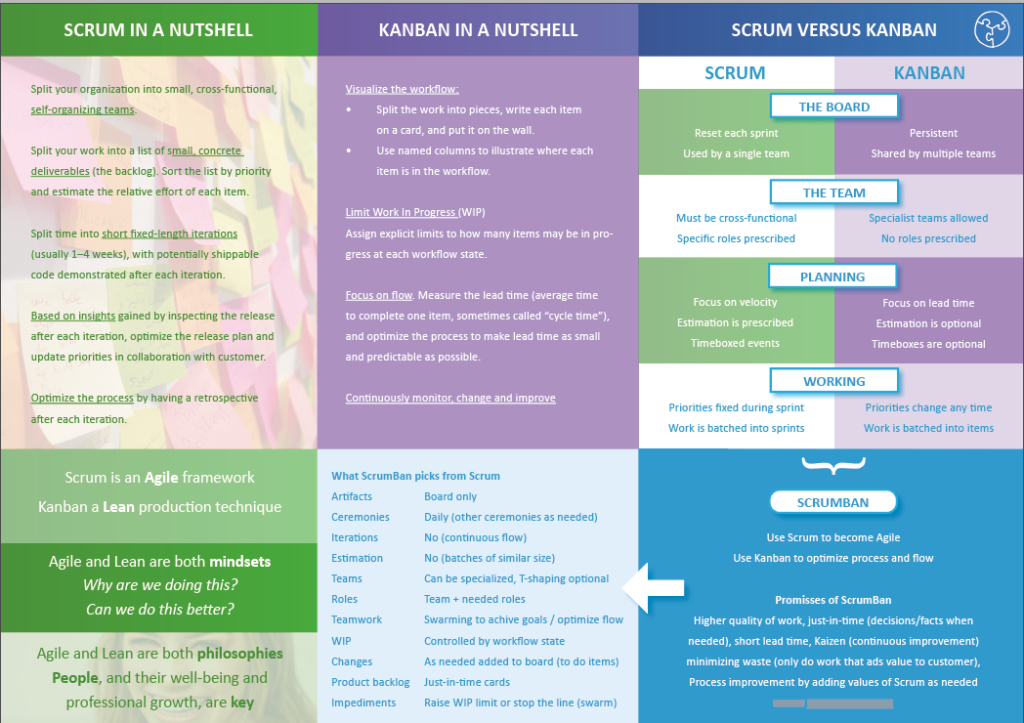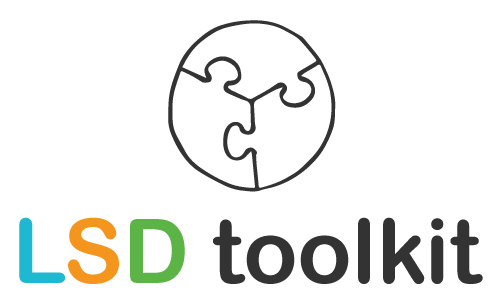Scrum is ‘only’ a tool, but a very powerful framework when applied correctly. And in the right setting. Scrum is intended for a development environment with many moving parts. Kanban is more suitable for completing well-defined tasks – such as helpdesk tickets. But there is also an intermediate form: ScrumBan.
Sometimes there is little iterrative in the work – we do not work in small steps on a solution in collaboration with and based on the feedback from users – but the realization of the work and the setting in which we work is complex and complicated. Then there is no Scrum increment, for example, but an ordered backlog is useful.

ScrumBan was developed for these kinds of situations. It is a contraction of Scrum and Kanban. Download the handy LSD ScrumBan poster to see the difference between Scrum and Kanban and what smart combination ScrumBan makes.
Scrum overboard?
ScrumBan is more Kanban than Scrum. So don’t use it rigidly, but play with the working method. Experiment with Scrum elements and see if they work for your team.
In general, it can be said that how work is ‘pulled’ through a sprint with Scrum does not work for every team, but Scrum is always useful in preparing work until it is ready to sprint. Regardless, Scrum remains most powerful when used for its intended purpose and deployed as it was conceived, including all ceremonies, roles, and artifacts.
Download the handy LSD Scrum poster (pdf).
